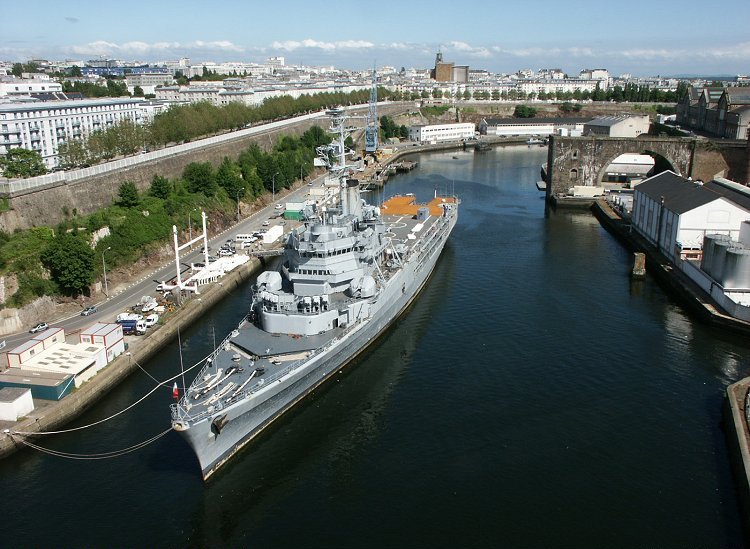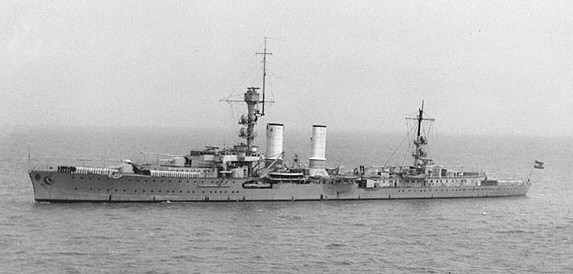|
Alsace-class Battleship
The ''Alsace'' class was a pair of fast battleships planned by the French Navy in the late 1930s in response to German plans to build two H-class battleships after the Second London Naval Treaty collapsed. The ''Alsace'' design was based on variants of the , and three proposals were submitted by the design staff. The proposed armament included nine or twelve guns or nine guns, but no choice was definitively made before the program ended in mid-1940. According to one pair of historians, logistical considerations—including the size of the 12-gun variant and the introduction of a new shell caliber for the 406 mm version—led the naval command to settle on the nine 380 mm design. But another pair of authors disagree, believing that the difficulty of designing and manufacturing a three-gun turret would have caused prohibitive delays during wartime, making the third, largest variant the most likely to have been built. The ships would have forced the French government to ... [...More Info...] [...Related Items...] OR: [Wikipedia] [Google] [Baidu] |
Fast Battleship
A fast battleship was a battleship which emphasised speed without – in concept – undue compromise of either armor or armament. Most of the early World War I-era dreadnought battleships were typically built with low design speeds, so the term "fast battleship" is applied to a design which is considerably faster. The extra speed of a fast battleship was normally required to allow the vessel to carry out additional roles besides taking part in the line of battle, such as escorting aircraft carriers. A fast battleship was distinguished from a battlecruiser in that it would have been expected to be able to engage hostile battleships in sustained combat on at least equal terms. The requirement to deliver increased speed without compromising fighting ability or protection was the principal challenge of fast battleship design. While increasing length-to-beam ratio was the most direct method of attaining a higher speed, this meant a bigger ship that was considerably more ... [...More Info...] [...Related Items...] OR: [Wikipedia] [Google] [Baidu] |
Main Battery
A main battery is the primary weapon or group of weapons around which a warship is designed. As such, a main battery was historically a gun or group of guns, as in the broadsides of cannon on a ship of the line. Later, this came to be turreted groups of similar large-caliber naval rifles. With the evolution of technology the term has come to encompass guided missiles as a vessel's principal offensive weapon, deployed both on surface ships and submarines. A main battery features common parts, ammunition, and fire control across the weapons which it comprises. Description In the age of cannon at sea, the main battery was the principal group of weapons around which a ship was designed, usually its heavies. With the coming of naval rifles and subsequent revolving gun turrets, the main battery became the principal group of heaviest guns, regardless of how many turrets they were placed in. As missiles displaced guns both above and below the water their principal group became a ve ... [...More Info...] [...Related Items...] OR: [Wikipedia] [Google] [Baidu] |
Arsenal De Brest
The Brest Arsenal (French - ''arsenal de Brest'') is a collection of naval and military buildings located on the banks of the river Penfeld, in Brest, France. It is located at . Timeline *1631-1635 Beginning of the foundations of the port infrastructure. *1674 Appearance of the Powder Magazines, Cordellerie and Military Hospital. *1683 Creation of the Troulan dock. *1746 Creation of the three Pontaniou docks near the anchor forges and naval constructions. *1752 Construction of the Bagne demolished in 1947. *1807 Construction of the Bâtiment aux Lions to house the arsenal's magazines. *1822-1827 Construction of Bassin 6 at the Salou. *1858 Appropriation of the Tourville and Jean Bart quays by the navy. *1864-1865 Construction of Bassin 7 at the Salou. *1865 Closure of the Penfeld port to commercial boats, turning it into a military port. *1889-1896 Construction of the South Jetty (1 500 m). *1895-1900 Construction of the West Jetty (200 m). *1899-1902 Transformation of the ... [...More Info...] [...Related Items...] OR: [Wikipedia] [Google] [Baidu] |
Sister Ship
A sister ship is a ship of the same class or of virtually identical design to another ship. Such vessels share a nearly identical hull and superstructure layout, similar size, and roughly comparable features and equipment. They often share a common naming theme, either being named after the same type of thing or person (places, constellations, heads of state) or with some kind of alliteration. Typically the ship class is named for the first ship of that class. Often, sisters become more differentiated during their service as their equipment (in the case of naval vessels, their armament) are separately altered. For instance, the U.S. warships , , , and are all sister ships, each being an . Perhaps the most famous sister ships were the White Star Line's s, consisting of , and . As with some other liners, the sisters worked as running mates. Other sister ships include the Royal Caribbean International's and . ''Half-sister'' refers to a ship of the same class but with some s ... [...More Info...] [...Related Items...] OR: [Wikipedia] [Google] [Baidu] |
Aircraft Carrier
An aircraft carrier is a warship that serves as a seagoing airbase, equipped with a full-length flight deck and facilities for carrying, arming, deploying, and recovering aircraft. Typically, it is the capital ship of a fleet, as it allows a naval force to project air power worldwide without depending on local bases for staging aircraft operations. Carriers have evolved since their inception in the early twentieth century from wooden vessels used to deploy balloons to nuclear-powered warships that carry numerous fighters, strike aircraft, helicopters, and other types of aircraft. While heavier aircraft such as fixed-wing gunships and bombers have been launched from aircraft carriers, these aircraft have not successfully landed on a carrier. By its diplomatic and tactical power, its mobility, its autonomy and the variety of its means, the aircraft carrier is often the centerpiece of modern combat fleets. Tactically or even strategically, it replaced the battleship in the ro ... [...More Info...] [...Related Items...] OR: [Wikipedia] [Google] [Baidu] |
Saint-Nazaire
Saint-Nazaire (; ; Gallo: ''Saint-Nazère/Saint-Nazaer'') is a commune in the Loire-Atlantique department in western France, in traditional Brittany. The town has a major harbour on the right bank of the Loire estuary, near the Atlantic Ocean. The town is at the south of the second-largest swamp in France, called "la Brière". Given its location, Saint-Nazaire has a long tradition of fishing and shipbuilding. The Chantiers de l'Atlantique, one of the largest shipyards in the world, constructed notable ocean liners such as , , and the cruise ship , the largest passenger ship in the world until 2022. Saint-Nazaire was a small village until the Industrial Revolution but became a large town in the second half of the 19th century, thanks to the construction of railways and the growth of the seaport. Saint-Nazaire progressively replaced upstream Nantes as the main haven on the Loire estuary. As a major submarine base for the Kriegsmarine, Saint-Nazaire was subject to a succes ... [...More Info...] [...Related Items...] OR: [Wikipedia] [Google] [Baidu] |
Brest, France
Brest (; ) is a port city in the Finistère department, Brittany. Located in a sheltered bay not far from the western tip of the peninsula, and the western extremity of metropolitan France, Brest is an important harbour and the second French military port after Toulon. The city is located on the western edge of continental France. With 142,722 inhabitants in a 2007 census, Brest forms Western Brittany's largest metropolitan area (with a population of 300,300 in total), ranking third behind only Nantes and Rennes in the whole of historic Brittany, and the 19th most populous city in France; moreover, Brest provides services to the one million inhabitants of Western Brittany. Although Brest is by far the largest city in Finistère, the ''préfecture'' (regional capital) of the department is the much smaller Quimper. During the Middle Ages, the history of Brest was the history of its castle. Then Richelieu made it a military harbour in 1631. Brest grew around its arsenal unti ... [...More Info...] [...Related Items...] OR: [Wikipedia] [Google] [Baidu] |
Slipway
A slipway, also known as boat ramp or launch or boat deployer, is a ramp on the shore by which ships or boats can be moved to and from the water. They are used for building and repairing ships and boats, and for launching and retrieving small boats on trailers towed by automobiles and flying boats on their undercarriage. The nautical terms ways and skids are alternative names for slipway. A ship undergoing construction in a shipyard is said to be ''on the ways''. If a ship is scrapped there, she is said to be ''broken up in the ways''. As the word "slip" implies, the ships or boats are moved over the ramp, by way of crane or fork lift. Prior to the move the vessel's hull is coated with grease, which then allows the ship or boat to "slip" off of the ramp and progress safely into the water. Slipways are used to launch (newly built) large ships, but can only dry-dock or repair smaller ships. Pulling large ships against the greased ramp would require too much force. Therefor ... [...More Info...] [...Related Items...] OR: [Wikipedia] [Google] [Baidu] |
Chief Of Staff Of The French Navy
The Chief of the Naval Staff (French: Chef d’état-major de la Marine, acronym: CEMM) is a French general officer, adviser to the Chief of the Defence Staff for the French Navy and responsible to the Minister of the Armed Forces for preparing the Navy for its engagement. Since 1 September 2020, the Chief of the Naval Staff has been Admiral Pierre Vandier. Main powers The Chief of the Naval Staff is the top representative of the French Navy. He advises and assists the Chief of the Defence Staff. He provides him with Navy-specific expertise. He maintains bilateral relations with foreign navies. He participates in inter-administrative bodies in the field of State action at sea. He has authority over the Navy General Staff (French: Etat-major de la Marine, acronym: EMM), over the Navy Military Personnel Directorate (French: Direction du personnel militaire de la Marine, acronym: DPMM), as well as over all the commands, directorates and services that make up the French Na ... [...More Info...] [...Related Items...] OR: [Wikipedia] [Google] [Baidu] |
François Darlan
Jean Louis Xavier François Darlan (7 August 1881 – 24 December 1942) was a French admiral and political figure. Born in Nérac, Darlan graduated from the ''École navale'' in 1902 and quickly advanced through the ranks following his service during World War I. He was promoted to rear admiral in 1929, vice admiral in 1932, lieutenant admiral in 1937 before finally being made admiral and Chief of the Naval Staff in 1937. In 1939, Darlan was promoted to admiral of the fleet, a rank created specifically for him. Darlan was Commander-in-Chief of the French Navy at the beginning of World War II. After France's armistice with Germany in June 1940, Darlan served in Philippe Pétain's Vichy regime as Minister of Marine, and in February 1941 he took over as Vice-President of the Council, Minister of Foreign Affairs, Minister of the Interior and Minister of National Defence, making him the ''de facto'' head of the Vichy government. In April 1942, Darlan resigned his ministries to Pierre ... [...More Info...] [...Related Items...] OR: [Wikipedia] [Google] [Baidu] |
Plan Z
Plan Z was the name given to the planned re-equipment and expansion of the ''Kriegsmarine'' (German navy) ordered by Adolf Hitler in early 1939. The fleet was meant to challenge the naval power of the United Kingdom, and was to be completed by 1948. Development of the plan began in 1938, but it reflected the evolution of the strategic thinking of the ''Oberkommando der Marine'' (Naval High Command) over the two decades following World War I. The plan called for a fleet centered on ten battleships and four aircraft carriers which were intended to battle the Royal Navy. This force would be supplemented with numerous long-range cruisers that would attack British shipping. A relatively small force of U-boats was also stipulated. When World War II broke out in September 1939, almost no work had been done on the new ships ordered under Plan Z. The need to shift manufacturing capacity to more pressing requirements forced the ''Kriegsmarine'' to abandon the construction program, and only a ... [...More Info...] [...Related Items...] OR: [Wikipedia] [Google] [Baidu] |
Kriegsmarine
The (, ) was the navy of Germany from 1935 to 1945. It superseded the Imperial German Navy of the German Empire (1871–1918) and the inter-war (1919–1935) of the Weimar Republic. The was one of three official branches, along with the and the , of the , the German armed forces from 1935 to 1945. In violation of the Treaty of Versailles, the grew rapidly during German naval rearmament in the 1930s. The 1919 treaty had limited the size of the German navy and prohibited the building of submarines. ships were deployed to the waters around Spain during the Spanish Civil War (1936–1939) under the guise of enforcing non-intervention, but in reality supported the Nationalists against the Spanish Republicans. In January 1939, Plan Z, a massive shipbuilding program, was ordered, calling for surface naval parity with the British Royal Navy by 1944. When World War II broke out in September 1939, Plan Z was shelved in favour of a crash building program for submarines (U-boat ... [...More Info...] [...Related Items...] OR: [Wikipedia] [Google] [Baidu] |









